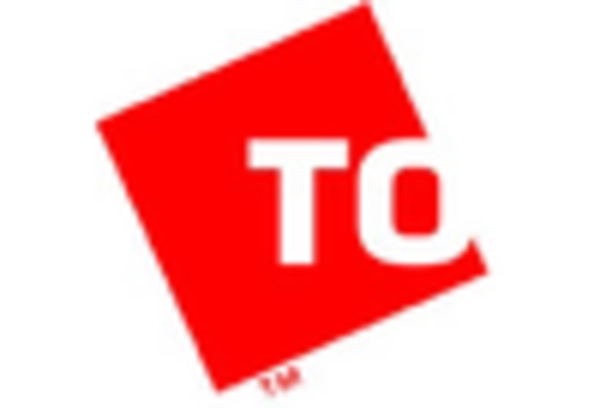Growing Demand for Grid Stability
The increasing complexity of power grids in the US necessitates enhanced stability, which is a primary driver for the shunt reactor market. As renewable energy sources become more prevalent, fluctuations in power supply can lead to voltage instability. Shunt reactors play a crucial role in mitigating these fluctuations, thereby ensuring a stable power supply. The US energy sector is projected to invest approximately $100 billion in grid modernization by 2027, which is likely to bolster the demand for shunt reactors. This investment indicates a strong commitment to maintaining grid reliability, further propelling the shunt reactor market. The need for improved grid stability is thus a significant factor influencing the growth of the shunt reactor market.
Increased Focus on Energy Efficiency
Energy efficiency has emerged as a critical focus for utilities and consumers alike in the US. The shunt reactor market benefits from this trend as these reactors help reduce energy losses in transmission systems. By compensating for reactive power, shunt reactors enhance the overall efficiency of the grid, which is increasingly important as energy costs rise. According to the US Department of Energy, energy efficiency measures could save the US economy over $400 billion by 2030. This potential for cost savings is likely to drive utilities to invest in shunt reactors, thereby expanding the shunt reactor market. The emphasis on energy efficiency aligns with broader sustainability goals, further supporting the market's growth.
Rising Investment in Transmission Infrastructure
The US is witnessing a surge in investment in transmission infrastructure, which is a key driver for the shunt reactor market. As aging infrastructure requires upgrades and new projects are initiated, the demand for shunt reactors is expected to increase. The Federal Energy Regulatory Commission has indicated that investments in transmission infrastructure could reach $30 billion annually over the next decade. This investment is likely to enhance grid reliability and capacity, creating a favorable environment for the shunt reactor market. As utilities seek to modernize their systems, shunt reactors will be integral in managing voltage levels and improving overall system performance.
Regulatory Framework Supporting Renewable Integration
The regulatory landscape in the US is increasingly supportive of integrating renewable energy sources into the grid. This shift is a significant driver for the shunt reactor market, as these reactors are essential for managing the variability associated with renewable energy. Policies promoting clean energy adoption, such as tax incentives and renewable portfolio standards, are likely to encourage utilities to invest in shunt reactors. The Energy Policy Act has set ambitious targets for renewable energy integration, which could lead to a 50% increase in the demand for shunt reactors by 2030. This regulatory support is crucial for the growth of the shunt reactor market.
Technological Innovations Enhancing Reactor Performance
Technological advancements in shunt reactor design are driving the market forward. Innovations such as improved materials and smart grid technologies enhance the performance and efficiency of shunt reactors. These advancements allow for better management of reactive power and voltage levels, which are critical in modern power systems. The US Department of Energy has highlighted the importance of research and development in energy technologies, indicating that investments in innovative solutions could exceed $10 billion annually. This focus on technological innovation is likely to create new opportunities within the shunt reactor market, as utilities seek to adopt the latest technologies to improve grid performance.

















Leave a Comment